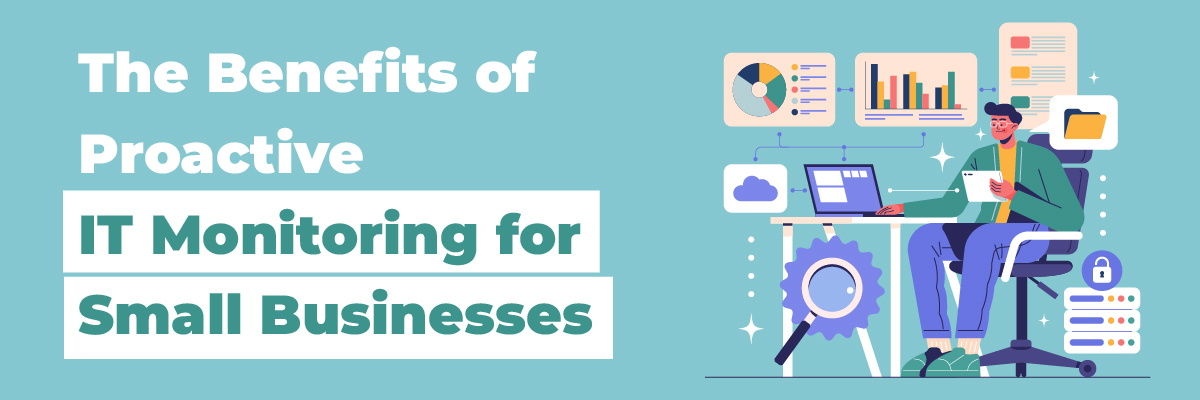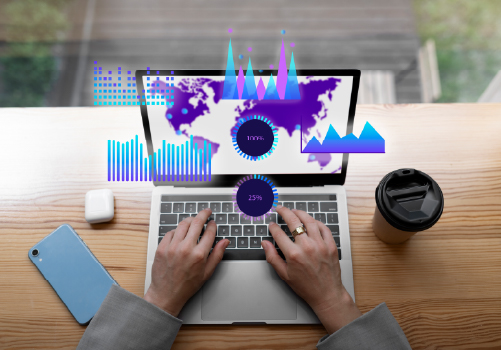The Power of Proactive Monitoring for small Businesses

Unlocking Growth, The Power of Proactive Monitoring for Small Businesses
In today’s fast-paced digital landscape, small businesses face numerous challenges in maintaining their IT infrastructure. From unexpected downtime to security threats, the need for proactive IT monitoring has never been more critical. Proactive IT monitoring not only helps in identifying potential issues before they escalate but also ensures smooth operations, enhanced security, and improved business performance. This article delves into the myriad benefits of proactive IT monitoring for small businesses and how it can be a game-changer in achieving operational excellence.
What is Proactive IT Monitoring?
Proactive IT monitoring involves continuously observing and analyzing the performance and health of an organization’s IT infrastructure. This approach ensures that any potential issues are identified and addressed before they can cause significant disruptions. By leveraging advanced tools and technologies, proactive IT monitoring provides real-time insights and predictive analytics to keep systems running smoothly.
8 Key Benefits of Proactive Monitoring
In an era where technology drives business operations, proactive IT monitoring is crucial for maintaining a competitive edge. It helps businesses stay ahead of potential issues, ensuring seamless operations and robust security.
| Improved System Uptime
|
One of the primary benefits of proactive IT monitoring is improved system uptime. By continuously monitoring network performance and system health, businesses can prevent unexpected downtimes. This not only enhances productivity but also ensures that customer services remain uninterrupted.
|
| Enhanced Security Measures
|
With the increasing prevalence of cyber threats, security is a top priority for businesses. Proactive IT monitoring helps in identifying and mitigating security risks before they can cause harm. This includes detecting unusual network activity, unauthorized access attempts, and potential vulnerabilities, ensuring a secure IT environment.
|
| Cost Savings
|
Proactive IT monitoring can lead to significant cost savings. By preventing downtime and minimizing disruptions, businesses can avoid the costs associated with system failures. Additionally, proactive maintenance can extend the lifespan of IT assets, reducing the need for frequent replacements |
| Better Resource Management
|
Efficient resource management is another advantage of proactive IT monitoring. By providing real-time insights into resource utilization, businesses can optimize their IT infrastructure, ensuring that resources are allocated effectively. This can lead to better performance and reduced operational costs.
|
| Real-Time Alerts and Notifications
|
Proactive IT monitoring systems provide real-time alerts and notifications, enabling IT teams to respond swiftly to potential issues. This immediate response capability is crucial in preventing minor issues from escalating into major problems.
|
| Data-Driven Decision Making
|
Access to real-time data and analytics allows businesses to make informed decisions. Proactive IT monitoring provides valuable insights into system performance, user behavior, and network trends, enabling strategic planning and data-driven decision-making.
|
| Scalability and Growth Support
|
As businesses grow, their IT needs evolve. Proactive IT monitoring supports scalability by ensuring that the IT infrastructure can handle increased demand. This adaptability is essential for businesses aiming for sustainable growth.
|
| Compliance and Regulatory Adherence
|
Many industries are subject to stringent regulatory requirements like HIPPA, SOC2, ISO 2000, etc.. Proactive IT monitoring helps businesses adhere to these regulations by ensuring that their IT systems are compliant. This reduces the risk of legal issues and potential fines. |
| Integration with Existing Systems | Proactive IT monitoring can be seamlessly integrated with existing IT systems. This ensures a smooth transition and enhances the overall efficiency of the IT infrastructure. |
| Future-Proofing Your Business | By adopting proactive IT monitoring, businesses can future-proof their operations. This involves staying updated with the latest technologies and trends, ensuring that the IT infrastructure remains relevant and capable of supporting future growth. |
 Best Practices for Proactive IT Monitoring
Best Practices for Proactive IT Monitoring
To maximize the benefits of proactive IT monitoring, consider the following best practices:
- Regular Updates: Ensure that all monitoring tools and systems are regularly updated to keep up with the latest threats and vulnerabilities.
- Comprehensive Coverage: Monitor all critical aspects of your IT infrastructure, including networks, servers, applications, and endpoints.
- Alert Management: Implement a robust alert management system to prioritize and address alerts based on their severity.
- Continuous Improvement: Regularly review and refine your monitoring strategies to adapt to changing business needs and technological advancements.
How to Implement Proactive IT Monitoring
Implementing proactive IT monitoring involves several steps. Begin by assessing your current IT infrastructure and identifying key areas that require monitoring. Next, select the appropriate tools and technologies that align with your business needs. Finally, establish monitoring protocols and ensure that your IT team is trained to respond to alerts and notifications effectively.
Why Choose Protected Harbor?
Protected Harbor stands out as a top MSP due to its commitment to excellence and customer satisfaction. Here are some reasons to choose Protected Harbor:
- Expertise: With years of experience, Protected Harbor brings a wealth of knowledge and expertise to the table.
- Tailored Solutions: We offer customized IT solutions that align with your business goals.
- 24/7 Support: Our dedicated support team is available around the clock to assist you with any IT issues.
- Cutting-Edge Technology: We utilize the latest technologies to ensure optimal performance and security.
Conclusion
Proactive IT monitoring is an invaluable strategy for small businesses seeking to enhance their IT infrastructure’s efficiency and security. By preventing issues before they arise, businesses can ensure smooth operations, reduce costs, and support growth. Partnering with a trusted MSP like Protected Harbor can further amplify these benefits, providing expert guidance and support.
Ready to take your IT infrastructure to the next level? Contact Protected Harbor today to learn more about our proactive IT monitoring solutions and how we can help your business thrive.







